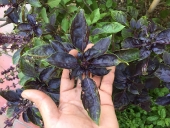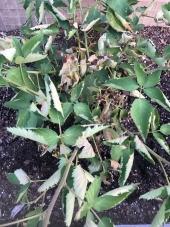



Ulla Bisgaard wrote:Yeah, I was thinking about nuts, but we already have our neighbors pecan tree to deal with, and it’s very messy. I know that some isn’t messy, but as Jen said they do take a long time to grow large.
I like the idea of the mulberry though, we have talked about it before. I will look for the Pakistani one online, and see if I can find one. We have lots of room for more trees.



Joylynn Hardesty wrote:
Ben Zumeta wrote:I have been told by knowledgable people vegetative cloning of Pome and Stone fruits is not worth the effort, because if it works at all, the roots will be weak.
Does anyone know why the roots of vegetative cloning is said to be weaker?

Rachel Lindsay wrote:It's going to freeze in my southern-USA location for the first time tonight! Just snipped my two basil plants and brought them in.
So, now I have to process the harvest. Other than drying it for decor I have no clue what to do to preserve basil. Any ideas?

